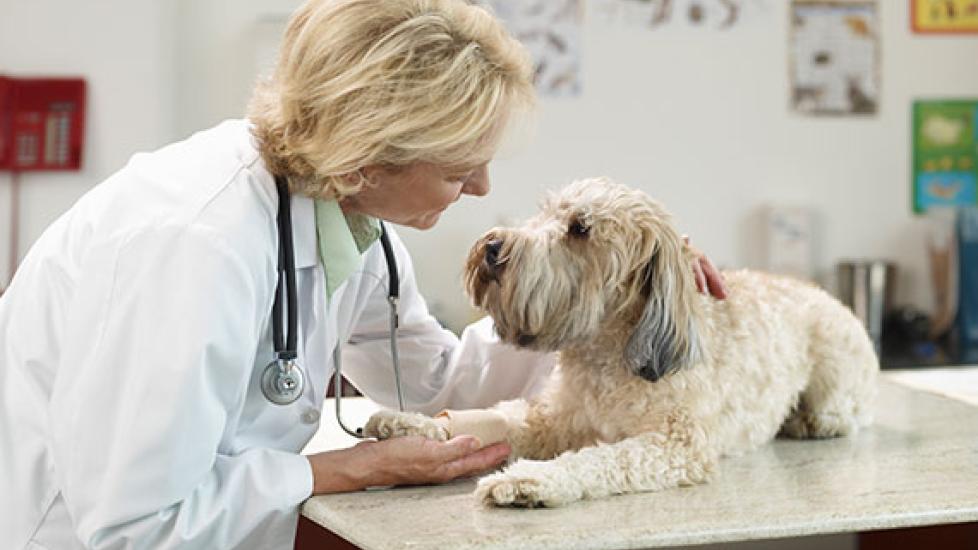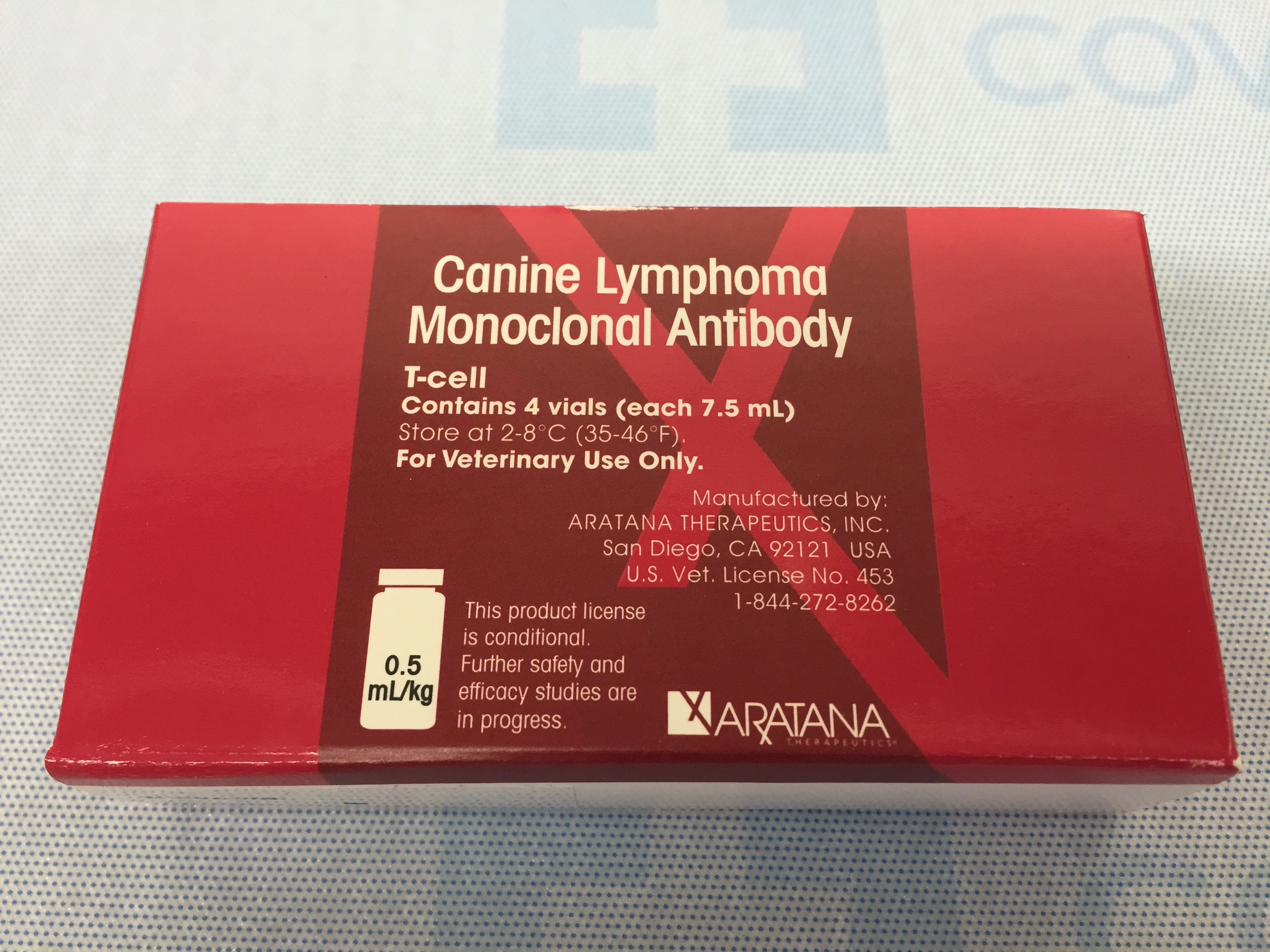The Use of Novel Therapeutics to Treat Lymphoma in a Dog
Cardiff’s last update covered his commencement of chemotherapy (see After Cancer Remission, Using Chemotherapy to Prevent Recurrence), so in this episode I’ll delve into one of the novel aspects of his cancer treatment.
When Cardiff first went through chemotherapy, from January to July 2014, he received a well-established and proven protocol called the University of Wisconson-Madison Canine Lymphoma Protocol (aka CHOP). Of course, I also gave him nutraceuticals (“supplements), herbs, a whole food diet, acupuncture, and other treatments to complement his chemotherapy and help manage side effects.
This time, Cardiff is also getting CHOP, but he’ll also receive a novel treatment that aims to train his immune system to recognize new cancer cells and facilitate their destruction before they form new tumors. It’s called T-cell monoclonal antibody (MAb).
What is An Antibody?
An antibody is an immune system protein that is produced in response to exposure to a substance to which the body may or may not have previously been exposed. That substance is commonly an infectious organism, including viruses, bacteria, fungi, and others.
Besides exposure to infectious organisms, the immune system can make antibodies after receiving a vaccination (Rabies, Distemper, Panleukopenia, etc.).
Antibodies are crucial to immune system function, as they facilitate recognition of organisms so infection is either prevented or less likely to take up residence inside the body.
Antibodies aren’t always produced by our bodies; they can also be transferred among members of the same, or sometimes different, species. For example, mothers transfer antibodies to their offspring before birth while the fetus is developing, and later in their breast milk during nursing.
Transfusions with blood products like plasma also permit antibody transfer between members of the same species to provide health-yielding effects.
The MAb Cardiff will be receiving is different from the antibodies that can be shared in a plasma transfusion or via mother’s milk, or by those produced secondary to vaccination.
What Makes MAb Unique as a Treatment for Cardiff’s Cancer?
MAb is unique as a treatment for Cardiff’s cancer as it has a mechanism of action different than that produced by chemotherapy. MAb does not directly kill cancer cells like chemotherapy. Instead, MAb “targets a specific marker on the surface of the cell. Once this antibody binds it, it then signals the immune system to kill the cell or tells the cell to commit suicide,” according to Cardiff’s veterinary oncologist, Dr. Avenelle Turner of Veterinary Cancer Group (Culver City, CA).
Dr. Turner participated in a clinical trial of MAb before it was available to the public, so I implicitly trust her experience in the realm of incorporating this novel treatment into his protocol.
Why Would I Consider MAb as Part of Cardiff’s Chemotherapy Protocol?
Giving Cardiff traditional chemotherapy will hopefully prevent new cancer cells from becoming tumors. Yet there are potential side effects associated with chemotherapeutic drugs.
According to Dr. Turner, “The EXPECTED outcome of any targeted therapy is to specially treat the problem/disease while sparing the normal tissue and cells. MAb should improve outcome and decrease side effects. Traditional chemotherapy kills cells that are dividing rapidly. Cancer cells tend to divide at a faster rate than normal cells, so this is why chemotherapy kills cancer but also has the secondary side effects because of the other cells in the body that also divide quickly. Generally, a targeted therapy is combined with chemotherapy to improve the overall outcome and increase the progression-free interval and survival time.”
I’m hopeful that Cardiff’s body will tolerate the MAb treatment, especially considering the potential for serious side effects of some chemotherapy drugs like Hydroxydaunorubicin (brand name Doxorubicin or Adriamycin), which is known for its damaging effects on the heart.
What Are the Potential Side Effects Associated with MAb?
With any therapy, a potential exists for side effects to occur, even if the likelihood is very low.
I’m all for using a product like MAb as an adjunct to Cardiff’s chemotherapy if the product is considered sufficiently safe and won’t have some of the same side effects as his CHOP protocol.
As it is such a new treatment, I sought Dr. Turner’s perspective. She says that “occasionally you can have a type-1 hypersensitivity reaction, which is the only reaction noted with our two studies. With long term use, you could develop secondary auto-immune disease (as seen in human medicine), as occurs with R-CHOP (R standing for Rituxan) chemotherapy for B cell lymphoma in people. We have limited information on the use of MAbs in veterinary medicine since this is such a new therapy.”
A type-1 hypersensitivity reaction is considered to be an allergic response that quickly leads to noticeable changes like urticaria (hives), angioedema (swelling), emesis (vomiting), diarrhea, hypotension (low blood pressure), and others. Such a response is reminiscent of that which occurs in some dogs due to stings by venomous insects like bees, hornets, and wasps.
The potential for type-1 hypersensitivity reaction associated with MAb can be reduced by administering pretreatment dose of an antihistamine like Diphenhydramine Hydrochloride (e.g., Benadryl Allergy).
Administration of Diphenhydramine Hydrochloride as an injection is more ideal than oral administration due to the faster response and increased guarantee that the product will have a desired effect. Drugs administered orally can be vomited and may not always be fully absorbed, thereby leaving a pet more susceptible to negative consequences.
How is Cardiff Responding to T Cell Monoclonal Antibody Treatment?
As the current manifestation of Cardiff’s disease is nearly identical to that which he had in December 2013, his responses to surgery and chemotherapy are very similar. He quickly heals from surgery and tolerates his chemotherapy quite well.
Cardiff is receiving a product called Canine Lymphoma Monoclonal Antibody (T-cell), manufactured by Aratana Therapeutics, Inc. Initially, Cardiff received MAb as an intravenous twice weekly for four weeks. He’s then getting MAb every other week for four additional treatments.
His response to MAb has been great. He’s not exhibited any hypersensitivity reactions and generally seems to feel better after his injections of MAb. Generally, he’s shown a better appetite on the day, and often for a few days, after he gets MAb in addition to his chemotherapy.
Hopefully, we are training Cardiff’s white blood cells to better recognize and eliminate any cancer cells—or cause them to “commit suicide”—through the use of MAb.
If you are curious about the use of MAb for your pet, make sure to consult with your veterinary oncologist on its availability and compatibility.
Tune in next time for a breakdown of my use of nutraceuticals and herbs as an adjunct treatment to Cardiff’s chemotherapy and MAb. It’s a topic about which I’m very passionate and which I apply to all the cancer patients for whom I provide care.

Dr. Patrick Mahaney

